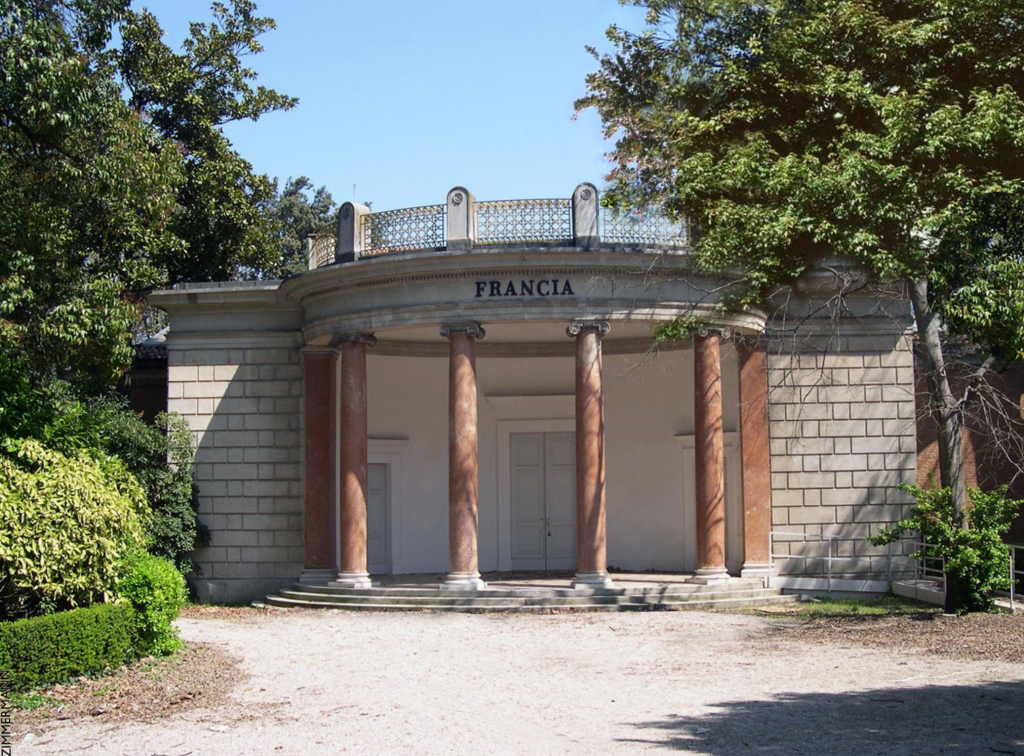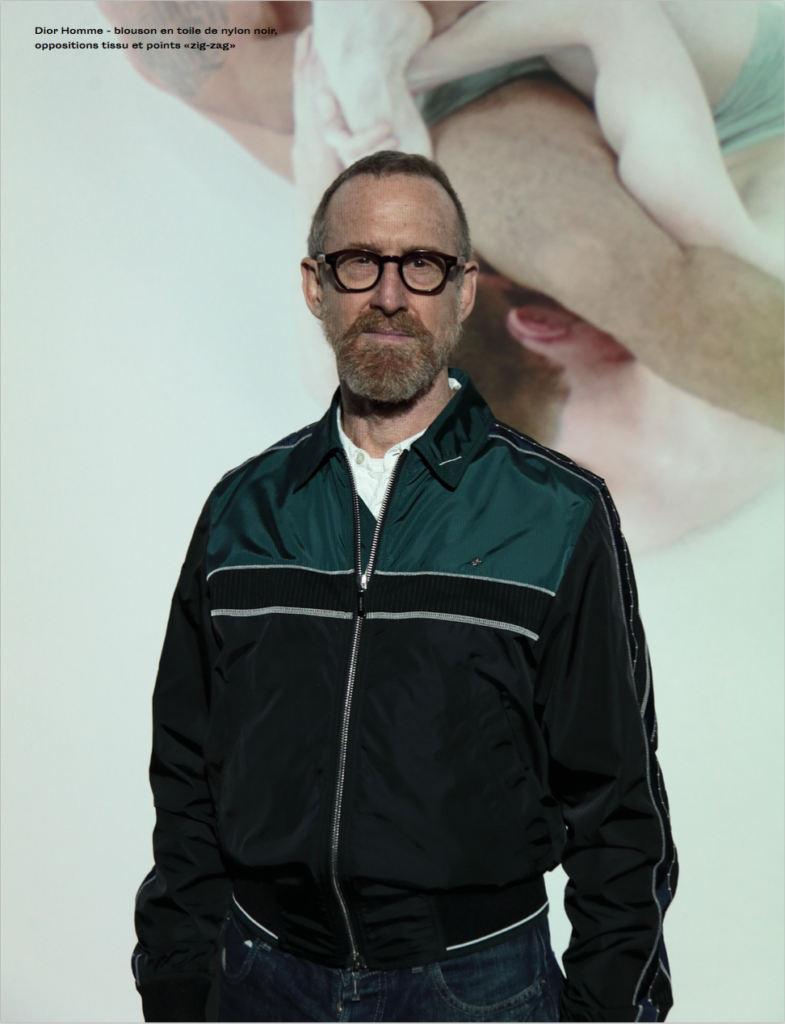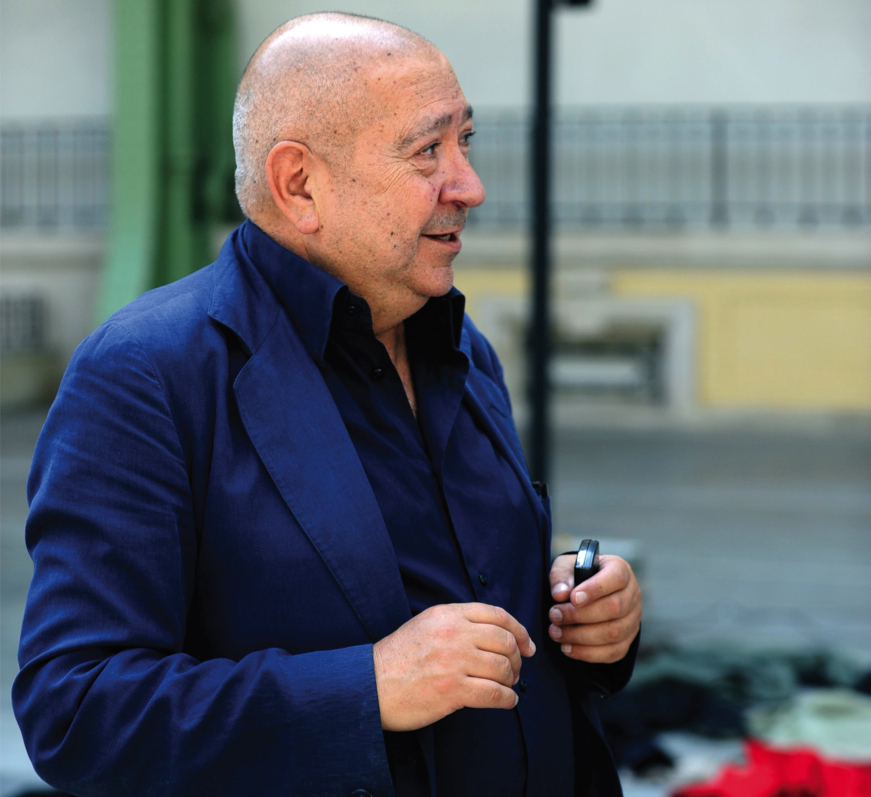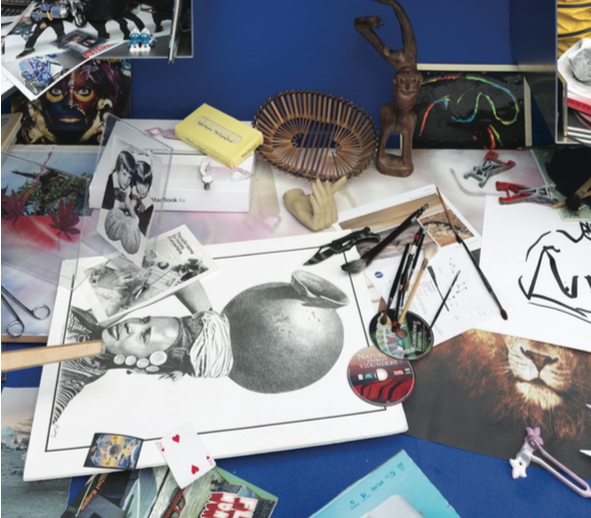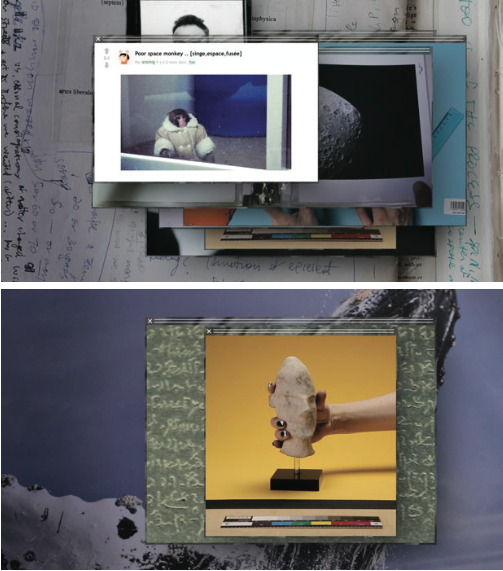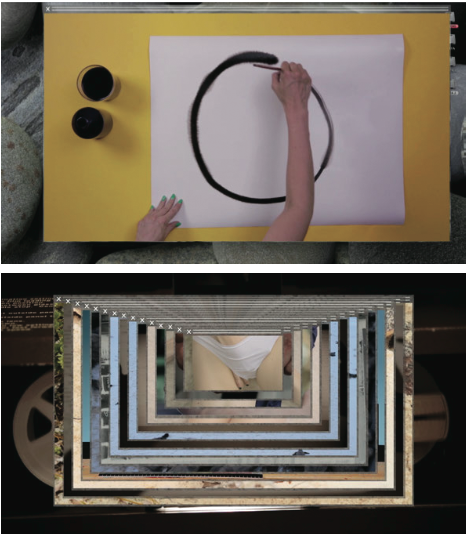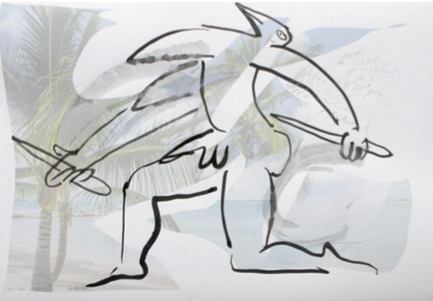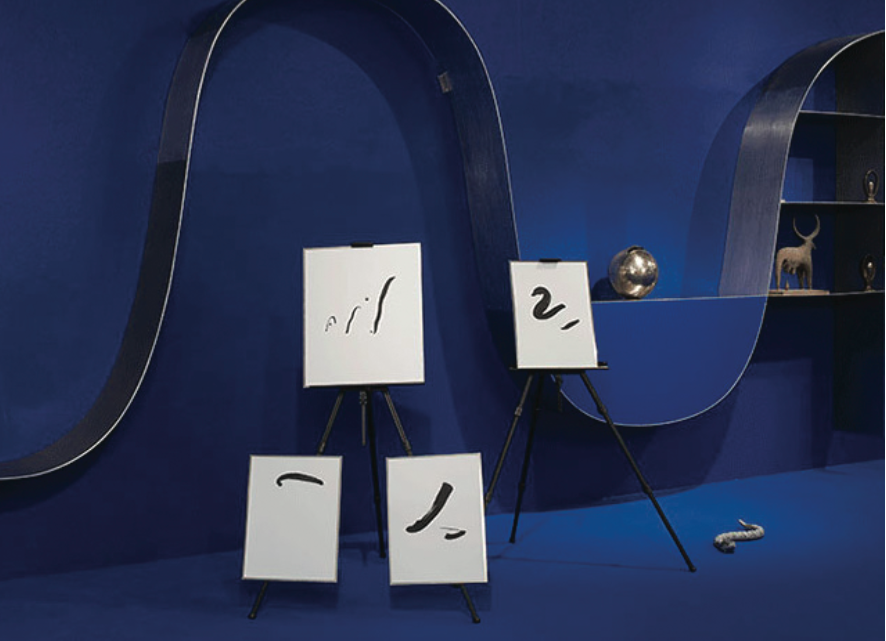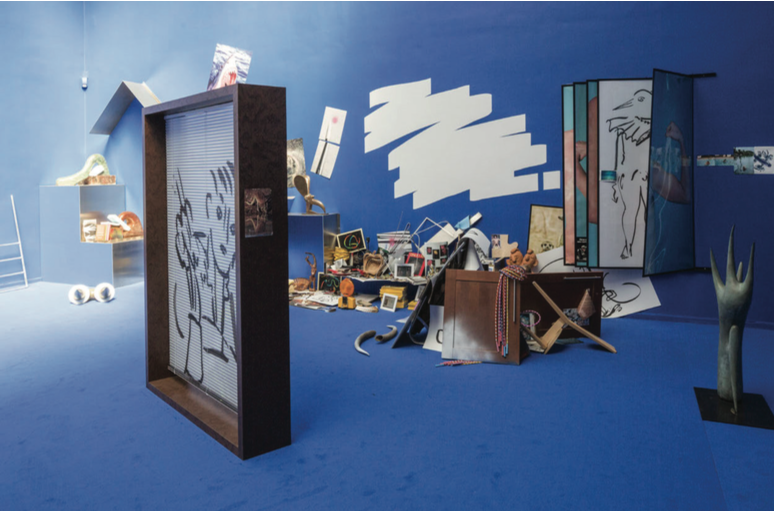
AN INTERVIEW WITH FRENCH ARTIST CAMILLE HENROT
By Crash redaction
In 2014, Crash met up with up-and-coming french artist Camille Henrot who had just won the Nam Jun Paik award and was making waves with her sensational video « Grosse Fatigue » and « The Pale Fox » installation. Today, she is back in Paris for a Carte Blanche exhibition called « Days and Dogs » at the Palais de Tokyo from October 18th to January 7th. Discover or rediscover her work through this interview.
Unlike many other artists who employ theory-based practices, you do not try to empty your art of all formal elegance. Your works also borrow from research in anthropology, without stumbling into the pitfalls of that discipline. Did you make a conscious decision to put aside all question of guilt?
Why should formal elegance and a basis in theory be opposed? Why standardize the relation between a certain type of aesthetics and an ideology (and vice versa)? Fortunately art does not function in a unilateral way, like making campaign posters. That’s what motivated me to choose the phrase, “Is it possible to be revolutionary and still like flowers?” for the ikebana project I did in 2011. A Leninist revolutionary is cited as asking this question in Leninism under Lenin, the Conquest of Power.
Guilt is the subject of my work. This is evident in Coupé/Décalé, the series of drawings Tropics of Love (a figuration of grotesque sexual tourists) or even more so in Million Dollars Point, which depicts a dive site cluttered with abandoned military equipment on Santo Island in Vanuatu. The video’s soundtrack is a speech sung by Israel “Iz” Ka’ano’i Kamakawiwo’Ole addressing prison inmates (mostly Hawaiian independence activists).
In my opinion, guilt does not always imply a tone of severity; it is even more subversive when expressed in a playful way. Art that evokes the familiar postures of moral authority relieve the viewer of the responsibility of asking these questions by giving the impression that art will take care of humanity’s injustice… Art needs to leave viewers uneasy and questioning. Perhaps it is only out of this feeling of uneasiness that true ethical thought can emerge, because that’s when we start to ask, “What should I do?”
I was motivated by a feeling of anxiety and revolt when I developed and directed Grosse Fatigue, but I wanted the film to be a fun and pleasant experience for viewers, so the content and ideas would penetrate their minds in a more insidious manner. The soundtrack exerts an almost enveloping influence on the viewer. Ideally I would prefer for all the ideas in the film to enter the viewer’s mind well after the fact, after they’ve already forgotten all about the film… like a residual subliminal message. I’ve actually seen this phenomenon at work with Grosse Fatigue.
Anthropology can lend to contemporary art a respect for the complexity of cultural relations, as well as a pragmatic and demystified approach to objects. Objects exist in that field within a complex that includes the production history, commercial circulation and interpretation.
I’m interested in anthropology for the doubt and failure it implies, and for its ability to offer its own criticism of itself. Autocriticism of this sort is notably embodied by Marcel Appenzzell, the misunderstood and repudiated ethnologist in Georges Perec’s Life: A User’s Manual. The community he’s studying would rather aban- don its village than suffer his presence. Today, issues of empathy and restitution are treated in a complex way by anthropologists like Monique Jeudy-Ballini. She’s not afraid to deride field researchers practicing participant observation or to point out the incomprehension and lack of any real exchange these scientists are facing. Between objectification and wild fascination, there is no position of comfort when it comes to relating to other cultures: that’s what I try to express as an artist.
In The Pale Fox by Marcel Griaule and Germaine Dieterlen, the principle of disorder, embodied by Ogo (the Pale Fox), is a principle of creation. Through his comings and goings and his wandering between heaven and earth, Ogo ends up creating the sun, the technique of bas- ket weaving and agriculture. In my exhibition The Pale Fox, the character can also be understood as an image of the unhealthy curiosity of a sleepless being (pallor as a sign of exhaustion, faces lit up by the pale glow of the computer screen). And he burns under the sun that (in all senses) consumes everything – even the spectacular catastrophes he causes (colonization, unequal use of resources, global inequities, glut of images, genetic manipulation, unattainable desires, anxiety, insomnia).
The fox has a few characteristics in common with the serpent of paradise. In 20th century representations, the West sees the rest of the world as a pillaged paradise (colonization, appropriation and removal of art objects). The problem with this thinking is that it leads to a negative devaluing of everything “other” in favor of a fetishization of authenticity. Paradise is always associated with virginity: what the white man (Western man) has not touched (the most remote islands). The fox in the exhibition stands not only for guilt and disorder, but also for the possibility of moving beyond value judgments, for a nonrigid relationship to things. Throughout the exhibition there are various bodies that have turned red – it’s an image of shame, but also sunburn, and it’s also a vulgar and amusing image of the “damned”.
I think there are stages in establishing a just and deeply ethical relationship. The will to power, fear, polarization and indifference are natural states; every other attitude arises out of effort. That’s what irritates me about the current fascination with “trolling”. Far from being a sign of cultural evolution furthered by technology, trolling is actually the most basic and minimal manifestation of thought. So the name given to this practice – from Celtic mythology – is spot on!
In your video Grosse Fatigue or your exhibition The Pale Fox, we notice a new relationship to nature beginning to take shape. Much mention has been made of late concerning Bruno Latour’s writings, in which he contends that our society was built on a false separation of Nature and Culture. Did you conceive these projects in terms of “coexistence”?
Latour’s We Have Never Been Modern reminds me of a citation from Claude Lévi-Strauss that particularly struck me. In fact I think kids should learn it by heart and recite it every morning at school like a mantra: “Never more than in the last four centuries of his history has man been better able to understand that by arrogating to him- self the right to separate humanity from animality, ascribing to the one what he refuses to the other, he was
opening a cursed circle, and that that same barrier, constantly pushed back, would serve to alienate men from other men, and to claim for ever smaller minorities the privilege of a humanism that is corrupt from the outset for having taken its principle and its very concept from pride” (Structural Anthropology, 1973).
You often talk about the Internet as a kind of catalyst for an archaic need to create connections. If the word “religion” comes from the Latin “religare”, meaning “to tie” or “to bind”, and Grosse Fatigue is a cosmological narrative mixing many different belief systems, do you think the Internet is a sort of religion in our period of growing spirituality, which at times borders on fanaticism? In addition, Bernard Stiegler identifies the Internet as a Pharmakon; it is at once a poison to humanity and the only remedy for its ills. Do you find yourself in the same position of attraction mingled with uncertainty with respect to digital culture?
I make no distinction between religion and magic. And this is not a criticism of religion. The Internet is the realm of science and superstition alike: the Jehovah’s Witnesses are just as active online as the Smithsonian Institute, where I conducted my research for Grosse Fatigue. I can see how the Internet develops the desire to believe, to be immersed in a coherent whole that only religion can of- fer. That was actually the basis for the voiceover text in this work that combines a number of different creation myths.
Internet technology confronts us with an immensity of heterogeneous and divergent material all reduced to the same level by the search engine. It’s a flattening of the world, which is a violent experience for the mind. Our brains aren’t prepared to absorb and cope with such a huge flow of information that it can’t make sense of: this confrontation creates a sense of disarray. In this situation, it makes sense that the human mind would resort to the most efficient means of synthesizing in- formation: myth and religion.
Religion binds things together. The digital world surrounds us with an immense darkness – the infinity all around us – which we have to re-inhabit, re-familiarize. It wasn’t the invention of the computer itself, but its miniaturization and the invention of the personal computer that really launched the latest cultural revolution. The home computer is a window opening onto an immense unknown, a space with no limit, which by definition cannot be known.
Religion, magic and science are the best remedies we have found so far for the anxiety of the unknown.
The Internet has no ideology and no doctrine, but it can encourage attitudes and emotions. Sometimes the way these emotions are ex- pressed is comical, like when a search engine is used as a seer or shaman: who hasn’t tried to find a hidden meaning in the Google image results for a certain word or name? Or typed per- sonal existential questions into the search field as though consulting an oracle or clairvoyant?
The Internet now has all the same characteristics as destiny. Any answer that does not conform perfectly to how the human mind functions – anything a bit different – is seen as a magic “sign”. I’ve got an exquisite book at home: a dictionary of divination techniques. It makes you realize that anything can be used to interpret the future: there’s cartomancy (cards), chiromancy (palms), oniromancy (dreams), seismomancy (earthquakes), chitonomancy (clothes), amnioscopy (sheep), dendromancy (trees), astrageromancy (reading the future in a baguette) and so many more! Today we have to add to this list the art of reading search results (googlemancy?) or reading Instagram like a horoscope.
I say that to underline the fact that there is a certain naivety in ascribing too much power to technology and thinking of things in terms of binaries like religion and science, poison and remedy… And yet I’m going to say something even more naïve: if we are smart about how we use the Internet, it might help us accept the fact that we can’t control everything, to become aware of our dependencies and addictions, and to finally relativize our anthropocentrism and speciocentrism.
You purchased most of the objects contained in your exhibition The Pale Fox. Within the phi- losophical movement known as Speculative Realism, which has been shaking up the Anglo-Saxon world since 2007, a new importance is accorded to objects. Especially in the theories of Graham Harman and Tristan Garcia, objects are even taken to be the equals of humanity. What is your position regarding this move to go beyond humanism?
The Pale Fox evokes the coexistence of the living and nonliving. Accumulation plays a therapeutic role in the exhibition; it contains only the most ordinary objects purchased second-hand on Ebay. They are inhabited, since something is expected of these objects: there are schoolbooks, pain relievers for menstrual cramps, Noah’s ark, a genealogy of English racehorses, baby photos, Bible-themed crossword puzzles, Fortran 77, family pictures, an inventory of the exhibition itself… It’s true: this desire to put everything on the same line does join in with Graham Harman and Tristan Garcia.
But the exhibition also expresses something nonrational: the ambiguity of wanting to hoard and the madness of collecting. The exhibition suggests that perception in the digital era favors the inclusion of noumenal things (God, death, the history of the universe, nonhistory) in phenomenal things (the arbitrary nature of cultural things and events). I think of my exhibition as a “malady-museum”: the sublimation of an Obsessive Compulsive Disorder (OCD), a collecting mania or a passion for connections, even in the most painful ways (paranoia, schizophrenia, catatonia, autism…). Hoarders invade their own homes to protect themselves from their fear of the outside world and they invent a form of order to hide their madness. The mental system created in an autistic brain protects it from the brutality of the unexpected and change. Behind the urge to accumulate things, there always lies the primordial house (cave – mind).
The exhibition The Pale Fox can be read both as a diagram composed of unfolding squares and as an undulating narrative frieze. Within this hyper-systematization, I was able to recover a sense of freedom in my artistic choices: when everything is already a specific meaning within a structure, every other choice is free. This is sort of the case in Joyce’s Ulysses.
How can we inhabit the city with our “primitive” interiority, our atavistic and eternal being? The fox in the city is the image of this. The objects in the exhibition are refuse, and refuse is a trace. The trash bin is the site of the most important issues of our time. It’s also where the narrative begins for police detectives. The fox is the animal that digs through the trash and feeds on garbage – carcasses of dead animals. It recycles – it initiates a cycle of transformation.
“All the conditions of life to which man is subject are inscribed here, refuse and debris have their place in it.” – The Pale Fox
In our opinion, Quentin Meillassoux’s thought is the most apt to restore our concept of History, because it moves beyond postmodern stasis and makes it possible to conceive of a past and future. We believe your work crystallizes this dual temporal movement. Although Grosse Fatigue and The Pale Fox are both “loops”, we believe you associate this form more with madness than with circular time. What is your relationship to History?
The exhibition is like an organism or a meta- diagram: an order that articulates other orders through a range of degrees from the general to the specific, from the intimate to the universal. It collects existing pieces, new works and objects found on Ebay, all within a rhythmic and graphic structure that unifies them inside a narrative. The narrative attempts to build a system of equivalencies on several levels. Different time scales and intellectual categories are brought side by side: the time scale of the New York Times (weekly), the different moments in a human life (birth, childhood, adulthood, old age), the different human civilizations (stone, bronze, industrial, digital), the days of the week, the four elements, the fundamental principles of Leibniz, lists of things to do now or later…
I don’t really think of linear and cyclical narrative as two separate options. I think of both frames simultaneously; they can coexist within the same work. The experience of human life as a cycle never really produces a complete circle. Anyway, a cycle is more like a spiral, a spring, a coiled serpent… I really like the image of the spring as an object. A spiral is also a perfect image of life – not only because of the DNA double helix, which is also featured in a Pale Fox sculpture – but also because it expresses the way life starts out as closed in on itself before it gradually opens up (germination of a seed, embryo…). The cycle and progressive development are not two opposed frames, but instead they cohabit within the development of an individual.
It’s also interesting to remember that the circle is not only a metaphor of spiritual wholeness; it can also represent an enclosure, a curse… In Grosse Fatigue, the circle is as much an image of obsession as of wisdom and the concept of the cycle; in the video the hand first draws a very elegant circle, and then does it again in an obsessive way. I think a lot in diagrams when I’m working on an exhibition, film or writing project. I sketch out in advance the shape my thought will take and how the different elements will connect and work together. The spiral is really the shape that haunts the Pale Fox – I also like how it’s the sign for mad- ness in comic books.
Water, the sea, seashells and marine concretions all figure prominently in the art of the Baroque. Your video Million Dollar Point contains a number of underwater shots, your project City of Ys focuses on the myth of Atlantis and you also devoted a wall of your exhibition The Pale Fox to water. As it happens, you also associate this wall with “becoming”: what do you see the world becoming in the future?
Despite the progression between the walls of The Pale Fox, there is no real “becoming” in the exhibition. The first wall (West) is the one associated with the different identities of water, the construction of primordial signs and the opening of Amma’s eye (in The Pale Fox). It corresponds to the very beginning of the uni- verse, when things are still coiled up in themselves. It’s the pre-existence of the universe in the form of a sign.
The North wall represents growth or child- hood. It’s associated with the air that makes waves on water and creates the large curve shape. It also comprises the principles of the world’s unfolding – germination of seeds, cellular separation, twin beings. It ends with the creation of the sun by the Pale Fox and the subsequent burns (represented by the sunburn photos), which indicate what follows on the wall. It corresponds to Leibniz’s principle of identity and the law of continuity. The subject is extension. It represents reciprocal inclusion (the embryo within the egg, the cell within the organism, the gourd within the drop box, humanity within the universe, fish within the sea, molecules within water). The East wall contains adulthood, specifically the adulthood of the Earth. It’s the painful severing of the world into abstract realities (stock images on major world issues like ground and water pollution, drugs, overpopulation).
It corresponds to the idea of bursting – expansion – of castration and the sacrifice of Nomo in the story of the Pale Fox, as well as to melancholy (as in the pensive character drawn on the blinds). The subject of the wall is everything that moves toward a limit: power, riches, nature. It represents unilateral and localizable inclusion, the domestication of the infinite world: the exhaustion of the world.
The last wall, associated with the present and near future, is devoted to the principle of in- discernables. It is the element of fire and represents the old age of humanity in the digital era… This is the wall that contains the objects and images evoking deterioration and loss, dematerialization, as well as the will to remember (photography, hard disks, Buddhism, Oppenheimer, camouflage frogs, pornography, code, artificially resuscitated Celtic cultures, the exhibition’s own archives). However, the wall does communicate with and move back towards the first wall – the wall devoted to the principle of identity and associated with air, which contains possibility in its pure state. All these associations are intuitive and up for debate, of course…
To go back to Million Dollar Point, I don’t know if it makes sense to connect it to the Baroque through the image of the seashell, because there aren’t really anymore left on this part of the seafloor. There’s nothing left but military refuse calcifying and gathering algae. Maybe it’s the subterranean image that connects it to the Baroque? I hadn’t thought of that before, but it’s true there’s that moment where the image is cut in half by the horizontal of the water’s surface, then it dives down below to show all the crushed and wrecked military equipment turning to stone… So, yes, maybe there is a connection to the Baroque after all.
In your video Scope (2005), an Italian Orientalist epic is slowly compressed along the lateral axis, stretching the shapes until they disappear. We get a sense that a cycle is ending with this work, as a reliance on the vertical axis is a pattern we often see in the art of dying civilizations. Wölfflin also says it implies a “linear” relationship to vision, recalling the Mannerism of the late 16th century. But Grosse Fatigue and The Pale Fox would be more Baroque, if we were to compare them to a historical period. Do you recognize something of yourself in the description of humanity in the 17th century, observing Nature and passing time without nostalgia, indulging a passion for detail and spiraling forms?
Yes, it’s interesting because Scope is an anamorphosis, something that was in style during the Renaissance. I’m thinking for example of the The Ambassadors (1533) by Hans Holbein (1497- 1543), which made an impression on me when I was studying art history. I like the idea of compression, because not only is it the secret pat- tern of power, but it’s also what all technology tends toward (miniaturization, synthesis). Art on the other hand is always trying to develop, expand, unfold… And yet, miniaturization is a necessary step in any big project.
CinemaScope technology – used to generate a wide image – works by first compressing the image onto film. The goal of the CinemaScope was to “replace real life”. The technology used an anamorphic format on ordinary 35mm film stock. It was only at projection time that the process was reversed and the image appeared wide on the screen.
I don’t know if I see anything of myself in a society that doesn’t feel nostalgia; it’s an interesting question. First of all, I think the way in which Western history was written, to the exclusion of other population groups, forces us to question any notion of progress. I often think about loss, but I don’t like the fetishization of the past. I also think a lot about death and disappearance. I try to domesticate these ideas, to make them less dangerous, or maybe less frightening? That’s undoubtedly the reason I’m so interested in Eastern philosophy and have found both a source of reassurance and a method of auto-criticism (of my culture and my own difficulty in letting go). I have trouble knowing when to stop, when to give up. Everything always seems possible to me and this mindset is both a curse (I exhaust myself by doing too much and see my artistic activity as a sort of meditative panic) and certainly a way of soothing some deep-seated anxiety. But I do think Grosse Fatigue and The Pale Fox are Baroque works in their search for movement and non fixity. There is a kind of hypnotic power in any spiraling movement, which we can see at work in both The Pale Fox and The Strife of Love in a Dream.
Interview by Charlotte Cosson & Emmanuelle Luciani







